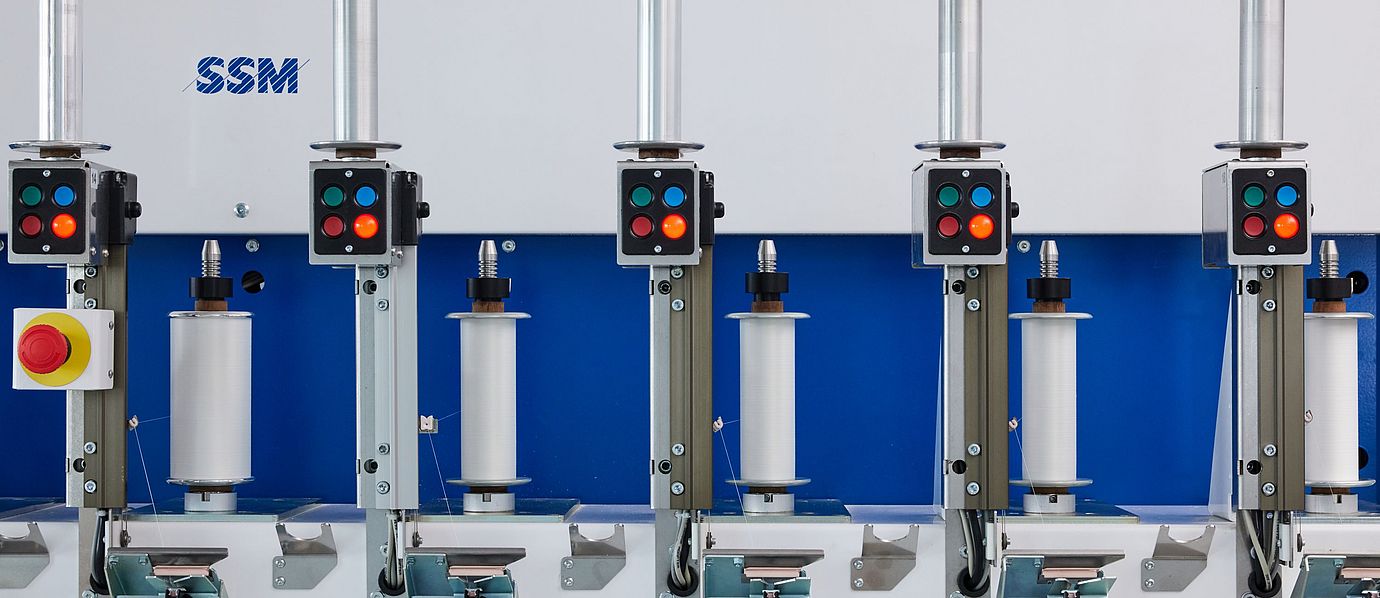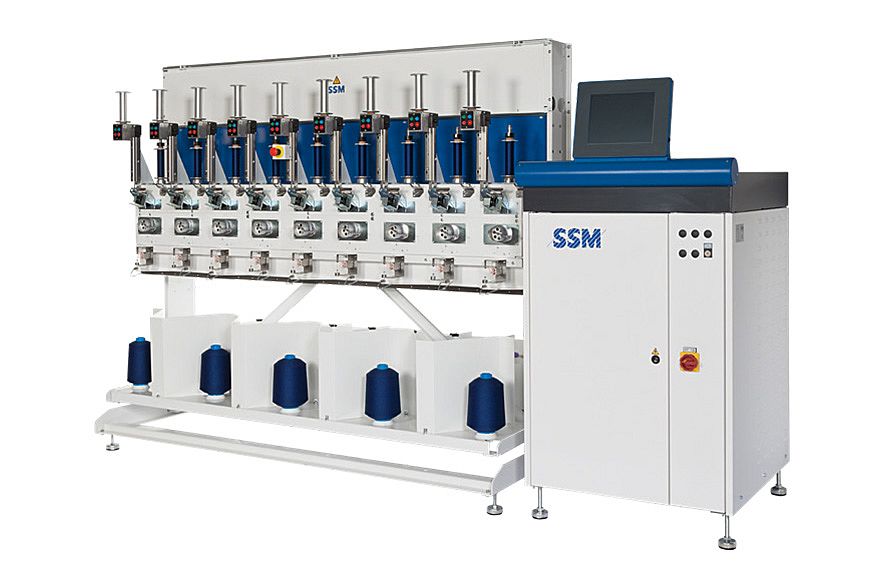For winding onto flanged-spools, SSM offers the FM1 manual high-speed parallel winder. This machine allows the cost-efficient preparation of flanged bobbins for the subsequent conventional covering process and features a patented automatic traverse correction for excellent unwinding performance. It is also equipped with digitens (online yarn tension regulation) and preciflex (electronic yarn laying system).
Parallel Winding Machines

FM1 Manual High-Speed Parallel Winder

The flexible and innovative concept of the manual FM1 parallel winder enables the cost-efficient preparation of flanged spools for the subsequent conventioal-covering- or twisting-process. During the development process, particular attention was paid to low energy consumption (even at high winding speeds) and to achieving flawless unwinding properties.
Technical data
| FM1 manual precision parallel winder | |
|---|---|
| Type of winding | p and q parallel winding |
| Mechanical speed | up to 1 800 m/min |
| Spindle speed | up to 16 800 min-1 |
| Drive | individual |
| Yarn laying | preciflex electronic yarn laying system |
| Package shape | double/single flanged bobbins, mini cops |
| Traverse length | 25 – 165 mm infinitely variable |
| Yarns | filaments (FDY, DTY, POY), staple yarns |
| Yarn count | FDY, DTY, staple yarns: up to 1 000 dtex POY: 11 – 40 dtex (with optional cold drawing device) |
| Number of spindles min./max. | 18/108 (double-sided) |
Downloads
Downloads
SSM Product Range – Brochure

Contact
SSM always wants to answer queries quickly and competently.